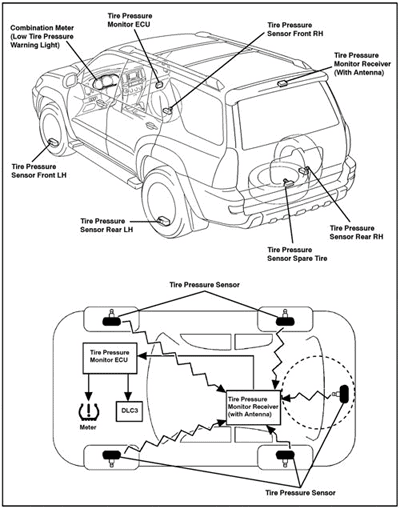Tire Pressure Monitoring System
Tire Inflation Pressure Monitor Systems (TPMS) are being used on more and more new vehicles. Low tires are potentially dangerous, especially if a vehicle is heavily loaded and traveling at highway speeds during hot weather. A low tire under these conditions is a blowout waiting to happen. The inflation pressure of the tires should be checked regularly, but many motorist do not check their tires. That is why Tire Pressure Monitor Systems are coming into use.

Tires are designed to operate within a certain pressure range. The recommended inflation pressure can usually be found in the vehicle owner’s manual and on a decal that may be located in the glove box or door jam. The recommended inflation pressure is designed to give the best combination of ride comfort, load carrying capacity and rolling resistance.
Increasing the tire inflation pressure reduces rolling resistance (which helps fuel economy). It also increases the load carrying capacity of the tire. But it also increases ride harshness. The maximum inflation pressure (which can be found on the sidewall of the tire) should never be exceeded because too much pressure may overstress the tire and increase the risk of tire failure.
Decreasing the inflation pressure improves ride quality by making the tire softer. Under certain circumstances this may help improve traction a bit. But lowering the pressure also reduces the tire’s ability to carry weight and increases rolling resistance (which hurts fuel economy). A low tire also wears faster. Why? Because increased rolling resistance and flexing in the tread scrubs away the tread. As the miles add up, so does the wear and eventually the tread is down to the wear bars. Once the wear bars are flush with the surface of the tread, the tire needs to be replaced.














